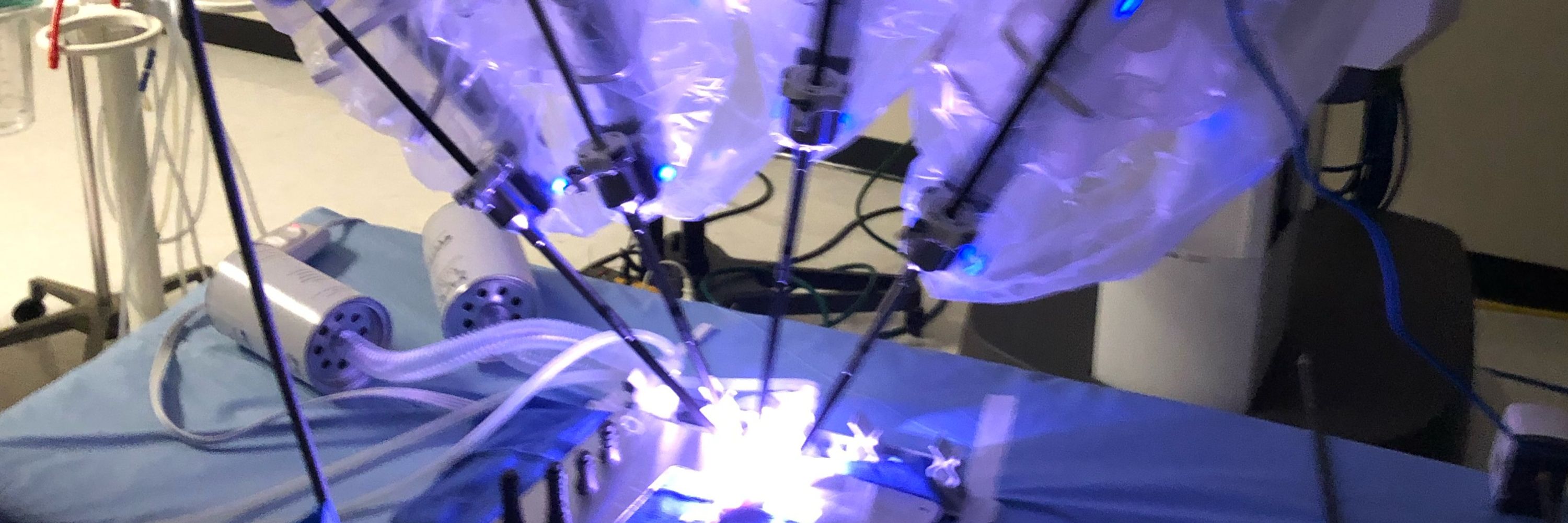
Matt Bogyo
@mbogyo.bsky.social
Chemical biologist at Stanford with a love for covalent binding molecules and hydrolases.
Reposted by Matt Bogyo
Our new Nature Chemistry paper is also accompanied by an insightful News and Views article by @jeyunjo.bsky.social and @mbogyo.bsky.social.
Check it out here: www.nature.com/articles/s41...
Thank you very much for the kind comments on our work!
Check it out here: www.nature.com/articles/s41...
Thank you very much for the kind comments on our work!

A pipeline for proteome-wide analysis of electrophile selectivity - Nature Chemistry
In the growing field of chemical proteomics, there is a need for general methods to map the reactivity profiles of covalent probes in complex proteomes. Now, a completely unbiased proteomic workflow h...
www.nature.com
October 30, 2025 at 10:43 AM
Our new Nature Chemistry paper is also accompanied by an insightful News and Views article by @jeyunjo.bsky.social and @mbogyo.bsky.social.
Check it out here: www.nature.com/articles/s41...
Thank you very much for the kind comments on our work!
Check it out here: www.nature.com/articles/s41...
Thank you very much for the kind comments on our work!
Our latest work developing AND-gate probes to image inflammation is out. Great work from Shiyu Chen and collaboration with the group at Merck.
pubs.acs.org/articlesonre...
pubs.acs.org/articlesonre...
pubs.acs.org
September 30, 2025 at 12:51 PM
Our latest work developing AND-gate probes to image inflammation is out. Great work from Shiyu Chen and collaboration with the group at Merck.
pubs.acs.org/articlesonre...
pubs.acs.org/articlesonre...
After a long journey and much hard work from many talented scientists, our paper is finally out. Take a look if you are interested in proteases and host microbe interactions in the gut. www.cell.com/cell-host-mi...

A Bacteroides fragilis protease activates host PAR2 to induce intestinal pain and inflammation
Lakemeyer and colleagues analyze the secretome of gut bacteria to identify factors
that target host PAR2. They find that the Bacteroides fragilis protease Bfp1 cleaves
and activates PAR2, disrupting i...
www.cell.com
September 26, 2025 at 6:02 PM
After a long journey and much hard work from many talented scientists, our paper is finally out. Take a look if you are interested in proteases and host microbe interactions in the gut. www.cell.com/cell-host-mi...
Thrilled to be speaking at the McCaig International Research Conference on #Osteoarthritis, March 11–13, 2026 in Kananaskis, Alberta 🇨🇦.
Trainee abstract submissions open until Oct 31, 2025!
mccaig.ucalgary.ca/event/intern...
#McCaig2026 #BoneAndJointHealth
Trainee abstract submissions open until Oct 31, 2025!
mccaig.ucalgary.ca/event/intern...
#McCaig2026 #BoneAndJointHealth

Home | MIRC
Advancements in Osteoarthritis: From Discovery to Treatment
mccaig.ucalgary.ca
September 12, 2025 at 10:13 PM
Thrilled to be speaking at the McCaig International Research Conference on #Osteoarthritis, March 11–13, 2026 in Kananaskis, Alberta 🇨🇦.
Trainee abstract submissions open until Oct 31, 2025!
mccaig.ucalgary.ca/event/intern...
#McCaig2026 #BoneAndJointHealth
Trainee abstract submissions open until Oct 31, 2025!
mccaig.ucalgary.ca/event/intern...
#McCaig2026 #BoneAndJointHealth
Great collaboration with @derda_lab @RatmirDerda just posted to bioRxiv. Check out how to best incorporate electrophiles into cyclic peptides to generate covalent inhibitors. www.biorxiv.org/content/10.1...

A Two-Step Synthesis of Covalent Genetically-Encoded Libraries of Peptide-Derived Macrocycles (cGELs) enables use of electrophiles with diverse reactivity
Genetically-encoded libraries of peptide-derived macrocycles containing electrophile "warheads" (cGELs) can be used to identify potent and selective covalent ligands for protein targets. Such cGELs ar...
www.biorxiv.org
August 29, 2025 at 4:18 AM
Great collaboration with @derda_lab @RatmirDerda just posted to bioRxiv. Check out how to best incorporate electrophiles into cyclic peptides to generate covalent inhibitors. www.biorxiv.org/content/10.1...
Having a great time as a senior visiting faculty at Nanyang Technological University in Singapore hosted by Professor Kanyi Pu. Great people and great science.



August 14, 2025 at 9:37 PM
Having a great time as a senior visiting faculty at Nanyang Technological University in Singapore hosted by Professor Kanyi Pu. Great people and great science.
Macrocyclic Phage Display for Identification of Selective Protease Substrates | Journal of the American Chemical Society pubs.acs.org/doi/full/10....

Macrocyclic Phage Display for Identification of Selective Protease Substrates
Traditional methods for identifying selective protease substrates have primarily relied on synthetic libraries of linear peptides, which offer limited sequence and structural diversity. Here, we present an approach that leverages phage display technology to screen large libraries of chemically modified cyclic peptides, enabling the identification of highly selective substrates for a protease of interest. Our method uses a reactive chemical linker to cyclize peptides on the phage surface, while simultaneously incorporating an affinity tag and a fluorescent reporter. The affinity tag enables capture of the phage library and subsequent release of phages expressing optimal substrates upon incubation with a protease of interest. The addition of a turn-on fluorescent reporter allows direct quantification of cleavage efficiency throughout each selection round. The resulting identified substrates can then be chemically synthesized, optimized and validated using recombinant enzymes and cells. We demonstrate the utility of this approach using Fibroblast Activation Protein α (FAPα) and the related proline-specific protease, dipeptidyl peptidase-4 (DPP4), as targets. Phage selection and subsequent optimization identified substrates with selectivity for each target that have the potential to serve as valuable tools for applications in basic biology and fluorescence image-guided surgery (FIGS). Overall, our strategy provides a rapid and unbiased platform for effectively discovering highly selective, non-natural protease substrates, overcoming key limitations of existing methods.
pubs.acs.org
July 19, 2025 at 9:42 PM
Macrocyclic Phage Display for Identification of Selective Protease Substrates | Journal of the American Chemical Society pubs.acs.org/doi/full/10....
Our paper outlining a new method for identifying selective protease substrates by phage display is finally out. Nice work from @mbarniolx.bsky.social. pubs.acs.org/doi/full/10....
pubs.acs.org
July 19, 2025 at 9:39 PM
Our paper outlining a new method for identifying selective protease substrates by phage display is finally out. Nice work from @mbarniolx.bsky.social. pubs.acs.org/doi/full/10....
Our latest work developing AND-gate probes for imaging caspase-1 mediated inflammation is out. Very productive collaboration with Merck & Co. in South San Francisco. #chembio. www.biorxiv.org/content/10.1...

A caspase-1-cathepsin AND-gate probe for selective imaging of inflammasome activation
Caspase-1 is a key mediator of the inflammasome pathway, which is associated with several inflammatory disorders including obesity, diabetes mellitus (DM), cardiovascular diseases (CVDs), cancers and ...
www.biorxiv.org
May 31, 2025 at 2:32 PM
Our latest work developing AND-gate probes for imaging caspase-1 mediated inflammation is out. Very productive collaboration with Merck & Co. in South San Francisco. #chembio. www.biorxiv.org/content/10.1...
Our work identifying new covalent inhibitors of Staphylococcus aureus serine hydrolyses from fragment libraries is out! great work from @tulsiupadhyay.bsky.social and our many collaborators, including @christianslentz.bsky.social, @mfellnerlab.bsky.social. #chembio
link.springer.com/article/10.1...
link.springer.com/article/10.1...
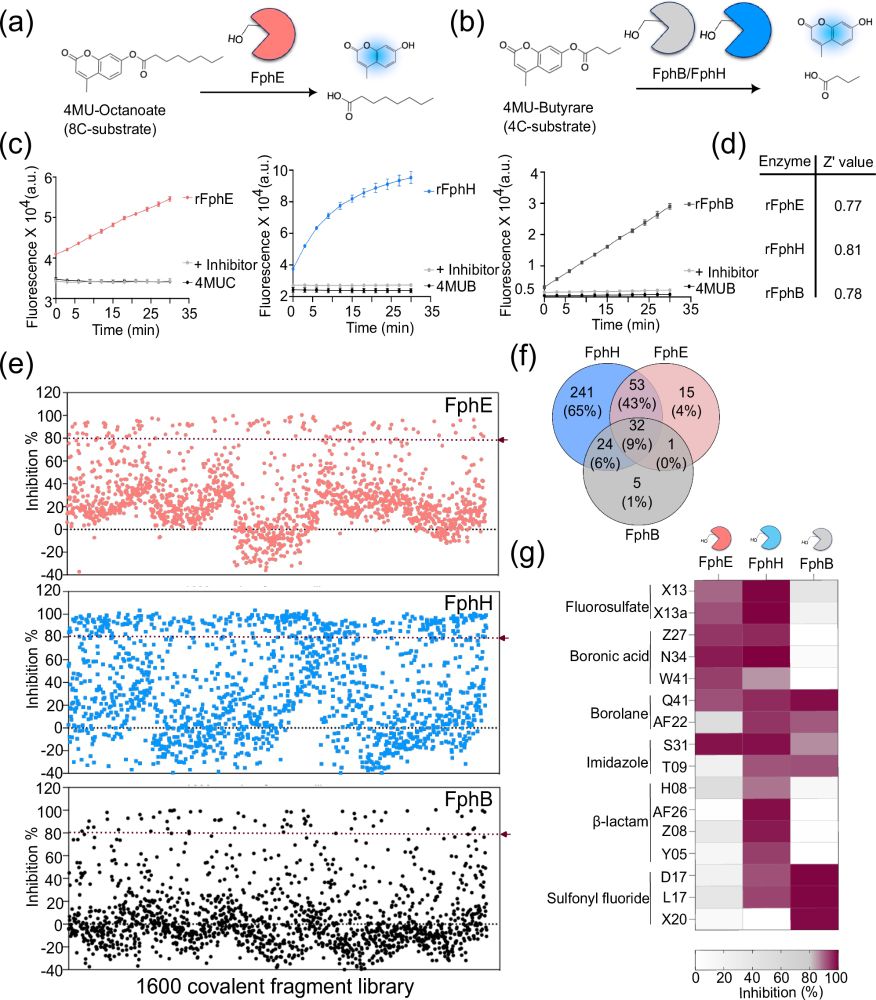
Identification of covalent inhibitors of Staphylococcus aureus serine hydrolases important for virulence and biofilm formation - Nature Communications
Staphylococcus aureus is a leading cause of bacteria-associated mortality worldwide. New tools are needed to both image and treat this pathogen. We previously identified a group of S. aureus serine hy...
link.springer.com
May 30, 2025 at 9:55 PM
Our work identifying new covalent inhibitors of Staphylococcus aureus serine hydrolyses from fragment libraries is out! great work from @tulsiupadhyay.bsky.social and our many collaborators, including @christianslentz.bsky.social, @mfellnerlab.bsky.social. #chembio
link.springer.com/article/10.1...
link.springer.com/article/10.1...
The phase IIb results from the multi center trail of our cathepsin probe (VGT-309/abenacianine) are out. The probe met its endpoints and resulted in significant clinical events in 45% of patients. Great work by Vergent Biosciences and Dr. Sunil Singhal (UPenn).
www.vergentbio.com/press-releas...
www.vergentbio.com/press-releas...
Vergent Bioscience Presents Phase 2B VISUALIZE Results Demonstrating Abenacianine for Injection (VGT-309) with Intraoperative Molecular Imaging Improved Tumor Visualization During Lung Surgery | Verge...
www.vergentbio.com
May 22, 2025 at 9:36 PM
The phase IIb results from the multi center trail of our cathepsin probe (VGT-309/abenacianine) are out. The probe met its endpoints and resulted in significant clinical events in 45% of patients. Great work by Vergent Biosciences and Dr. Sunil Singhal (UPenn).
www.vergentbio.com/press-releas...
www.vergentbio.com/press-releas...
Check out the nice News and Views article about our work from lead author @sijiewang.bsky.social using phage display to find covalent inhibitors of protein-protein interactions. #ChemBio
www.nature.com/articles/s41...
www.nature.com/articles/s41...

Fishing for covalent peptides
Nature Chemical Biology - Electrophilic phage display has emerged as a powerful platform for discovering high-affinity or covalent peptide ligands. A new study reveals that this platform enables...
www.nature.com
May 1, 2025 at 3:46 PM
Check out the nice News and Views article about our work from lead author @sijiewang.bsky.social using phage display to find covalent inhibitors of protein-protein interactions. #ChemBio
www.nature.com/articles/s41...
www.nature.com/articles/s41...
Reposted by Matt Bogyo
Hello Community!
Are you a postdoc/grad student preparing to launch a faculty search? Do you have a track record of excellence in research, leadership, mentorship & community engagement? Apply to the 2025 Next Generation Faculty Symposium: www.berkeleystanfordnextgensymposium.com! Pls repost! (1/3)
Are you a postdoc/grad student preparing to launch a faculty search? Do you have a track record of excellence in research, leadership, mentorship & community engagement? Apply to the 2025 Next Generation Faculty Symposium: www.berkeleystanfordnextgensymposium.com! Pls repost! (1/3)
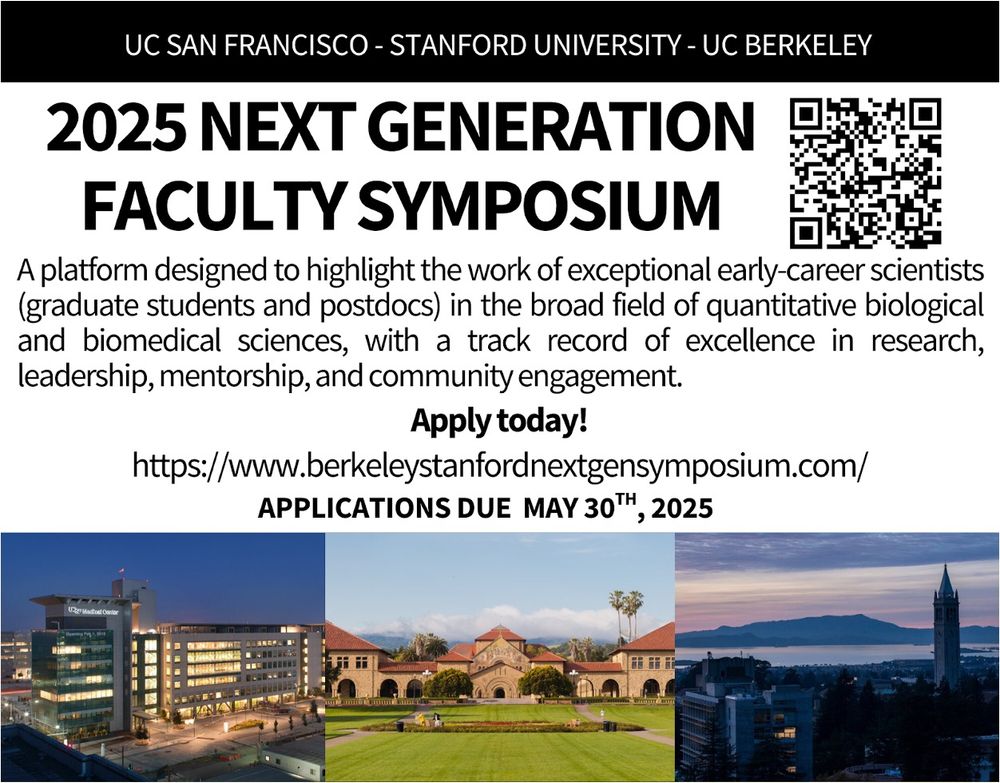
April 21, 2025 at 7:21 PM
Hello Community!
Are you a postdoc/grad student preparing to launch a faculty search? Do you have a track record of excellence in research, leadership, mentorship & community engagement? Apply to the 2025 Next Generation Faculty Symposium: www.berkeleystanfordnextgensymposium.com! Pls repost! (1/3)
Are you a postdoc/grad student preparing to launch a faculty search? Do you have a track record of excellence in research, leadership, mentorship & community engagement? Apply to the 2025 Next Generation Faculty Symposium: www.berkeleystanfordnextgensymposium.com! Pls repost! (1/3)
If you are interested in lipids in bacteria, check out this awesome new review written by my talented student Alyssa Carter, super postdoc Emily Woods and me. #chembio
www.sciencedirect.com/science/arti...
www.sciencedirect.com/science/arti...

Chemical strategies for targeting lipid pathways in bacterial pathogens
Microbial pathogens continue to plague human health and develop resistance to our current frontline treatments. Over the last few decades, there has b…
www.sciencedirect.com
April 19, 2025 at 10:22 PM
If you are interested in lipids in bacteria, check out this awesome new review written by my talented student Alyssa Carter, super postdoc Emily Woods and me. #chembio
www.sciencedirect.com/science/arti...
www.sciencedirect.com/science/arti...
Great visit to Melbourne Uni to give a talk and visit with my former PhD student Laura Edgington-Mitchell and her lab.
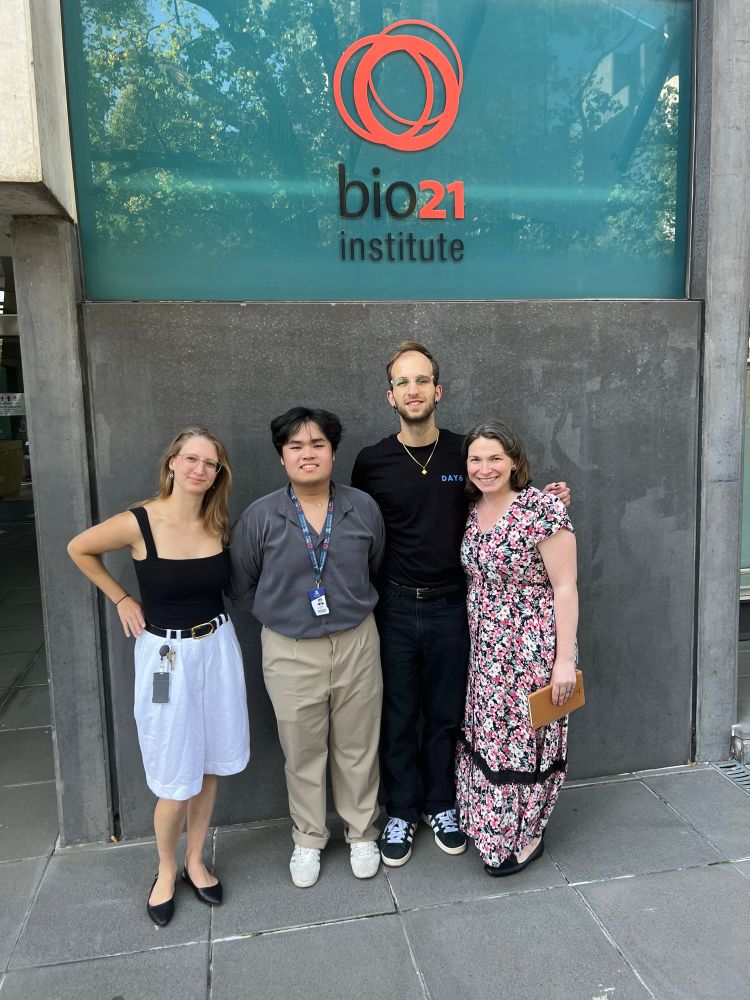
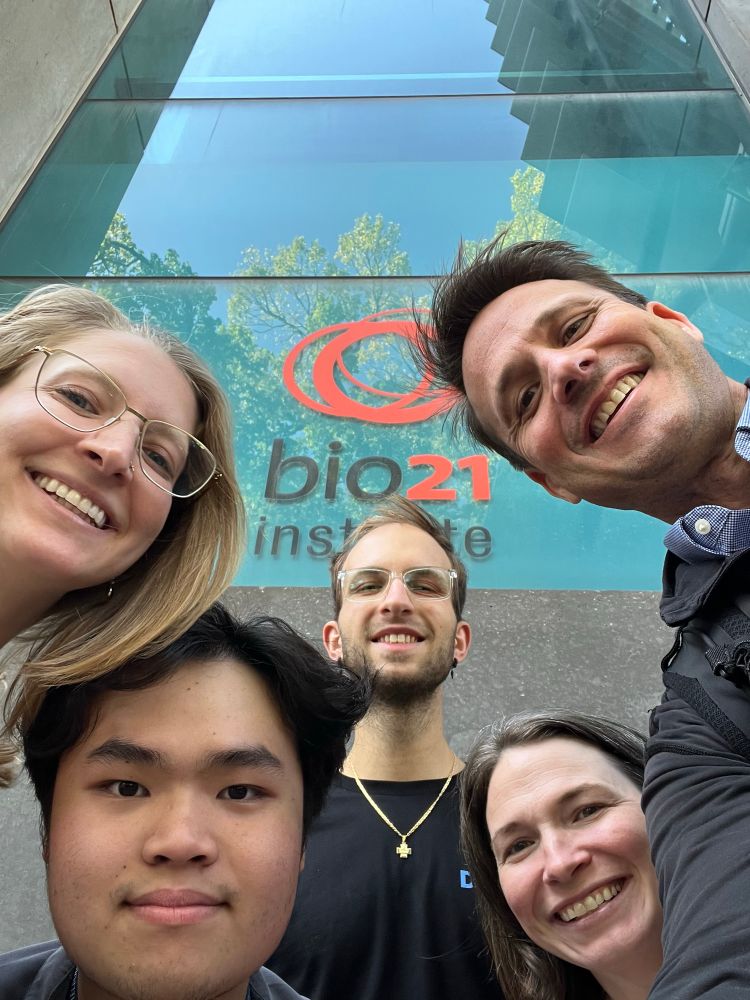
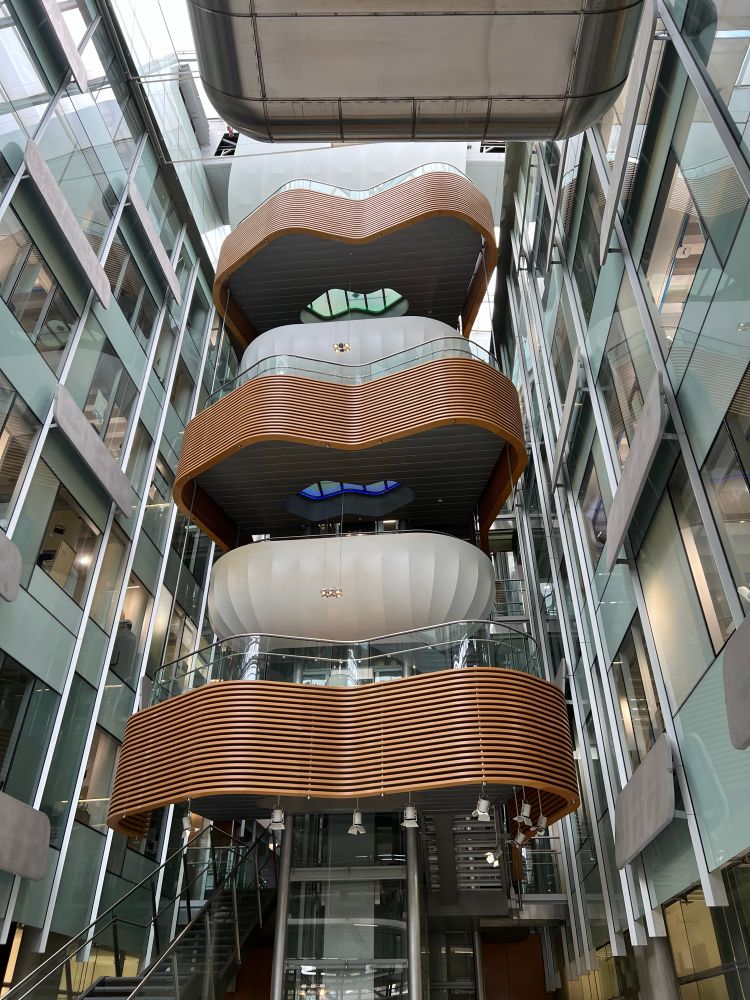
April 12, 2025 at 4:26 AM
Great visit to Melbourne Uni to give a talk and visit with my former PhD student Laura Edgington-Mitchell and her lab.
Had a great time at #ABPP2025! Great to see so many former lab members and their students and postdocs. Awesome venue and program. Looking forward to ABPP2027 in Leiden and then Ben Cravatt and I will try to bring it to California!

April 3, 2025 at 6:19 AM
Had a great time at #ABPP2025! Great to see so many former lab members and their students and postdocs. Awesome venue and program. Looking forward to ABPP2027 in Leiden and then Ben Cravatt and I will try to bring it to California!
Reposted by Matt Bogyo
Online now! #chembiol

Visualization of calpain-1 activation during cell death and its role in GSDMD cleavage using chemical probes
Horbach et al. developed chemical tools to study calpain-1 activation during pyroptosis. Using mass cytometry and IQF substrates, the authors show that calpain-1 correlates with GSDMD and caspase-1 in immune cells. They also demonstrate that calpain-1 cleaves GSDMD at a putative QRTF/Q, potentially supporting pyroptosis process.
dlvr.it
March 28, 2025 at 3:30 PM
Online now! #chembiol
Reposted by Matt Bogyo
Engineered commensals for targeted nose-to-brain drug delivery www.cell.com/cell/fulltex...

Engineered commensals for targeted nose-to-brain drug delivery
Shen et al. investigate the use of Lactobacillus plantarum, a commensal bacterial
strain, as a chassis for targeting the olfactory mucosa to facilitate precise nose-to-brain
delivery of therapeutic mo...
www.cell.com
March 31, 2025 at 3:17 PM
Engineered commensals for targeted nose-to-brain drug delivery www.cell.com/cell/fulltex...
Reposted by Matt Bogyo
Great keynote of @mbogyo.bsky.social to kick off the second day of #ABPP2025 Impressive progress on probes for image guided surgery and for detection of Staphylococcus aureus.

March 31, 2025 at 10:27 AM
Great keynote of @mbogyo.bsky.social to kick off the second day of #ABPP2025 Impressive progress on probes for image guided surgery and for detection of Staphylococcus aureus.
Reposted by Matt Bogyo
Reposted by Matt Bogyo
Exciting discovery by Svensson lab and collaborators @stanfordmedicine.bsky.social, computational discovery of 2500 new bioactive peptides, including 12-mer named BRP that reduces food intake leading to weight loss w/o nausea in mice!
www.nature.com/articles/s41...
www.nature.com/articles/s41...
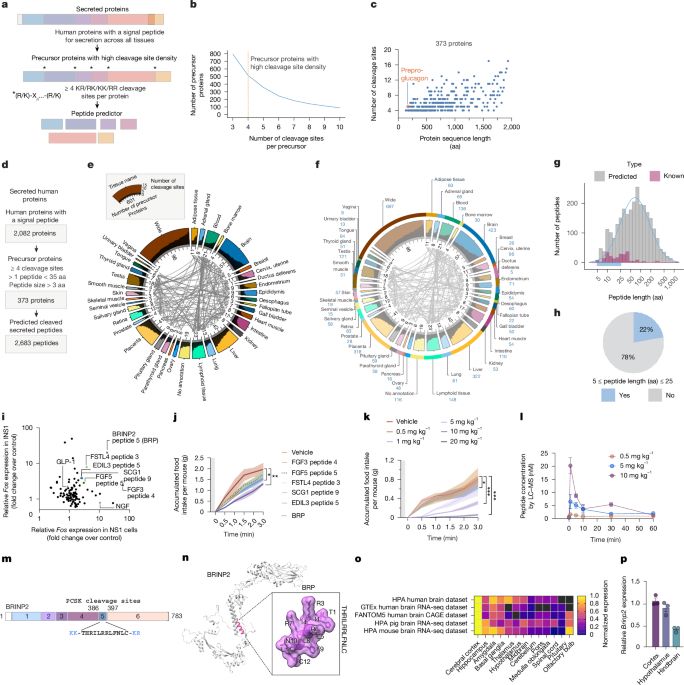
Prohormone cleavage prediction uncovers a non-incretin anti-obesity peptide - Nature
Computational drug discovery is used to identify a 12-mer peptide derived from BRINP2 with potent anti-obesity effects that are independent of leptin, glucagon-like peptide 1 receptor and melanocortin...
www.nature.com
March 11, 2025 at 11:22 PM
Exciting discovery by Svensson lab and collaborators @stanfordmedicine.bsky.social, computational discovery of 2500 new bioactive peptides, including 12-mer named BRP that reduces food intake leading to weight loss w/o nausea in mice!
www.nature.com/articles/s41...
www.nature.com/articles/s41...
Reposted by Matt Bogyo
What are the targets of beta-lactam antibiotics in Mycobacterium tuberculosis? Find out here...
www.biorxiv.org/content/10.1...
www.biorxiv.org/content/10.1...

Comprehensive identification of β-lactam antibiotic polypharmacology in Mycobacterium tuberculosis
Infections with Mycobacterium tuberculosis (Mtb) cause tuberculosis (TB), which requires at least six months of treatment with multiple antibiotics. There is emergent interest in using β-lactam antibi...
www.biorxiv.org
March 3, 2025 at 9:18 PM
What are the targets of beta-lactam antibiotics in Mycobacterium tuberculosis? Find out here...
www.biorxiv.org/content/10.1...
www.biorxiv.org/content/10.1...
Reposted by Matt Bogyo
Francis Collins led the mapping of the human genome, and chose to do big scientific to benefit the public. He is a a former NIH Director.
He just resigned his position in government. His resignation letter:
www.nytimes.com/2025/03/01/u...
He just resigned his position in government. His resignation letter:
www.nytimes.com/2025/03/01/u...

March 1, 2025 at 6:47 PM
Francis Collins led the mapping of the human genome, and chose to do big scientific to benefit the public. He is a a former NIH Director.
He just resigned his position in government. His resignation letter:
www.nytimes.com/2025/03/01/u...
He just resigned his position in government. His resignation letter:
www.nytimes.com/2025/03/01/u...
Another big publication from @sijiewang.bsky.social this week. Check out our efforts to use mRNA display to screen for covalent binding inhibitors of Staphylococcus aureus serine hydrolases. pubs.acs.org/articlesonre...
pubs.acs.org
February 27, 2025 at 4:54 PM
Another big publication from @sijiewang.bsky.social this week. Check out our efforts to use mRNA display to screen for covalent binding inhibitors of Staphylococcus aureus serine hydrolases. pubs.acs.org/articlesonre...
Reposted by Matt Bogyo
New article out in ACS Infectious Diseases! Using activity-based probes by H. Overkleeft, former PhD candidate @jalal228.bsky.social identified an alpha-amylase family protein of S. aureus supporting virulence during Galleria infection! @monaj66.bsky.social pubs.acs.org/doi/10.1021/...

Activity-Based Protein Profiling Identifies an α-Amylase Family Protein Contributing to the Virulence of Methicillin-Resistant Staphylococcus aureus
In search of new putative antimicrobial drug targets in methicillin-resistant Staphylococcus aureus, we aimed to identify and characterize retaining glycosidase activities in this bacterial pathogen. ...
pubs.acs.org
February 11, 2025 at 8:38 AM
New article out in ACS Infectious Diseases! Using activity-based probes by H. Overkleeft, former PhD candidate @jalal228.bsky.social identified an alpha-amylase family protein of S. aureus supporting virulence during Galleria infection! @monaj66.bsky.social pubs.acs.org/doi/10.1021/...


